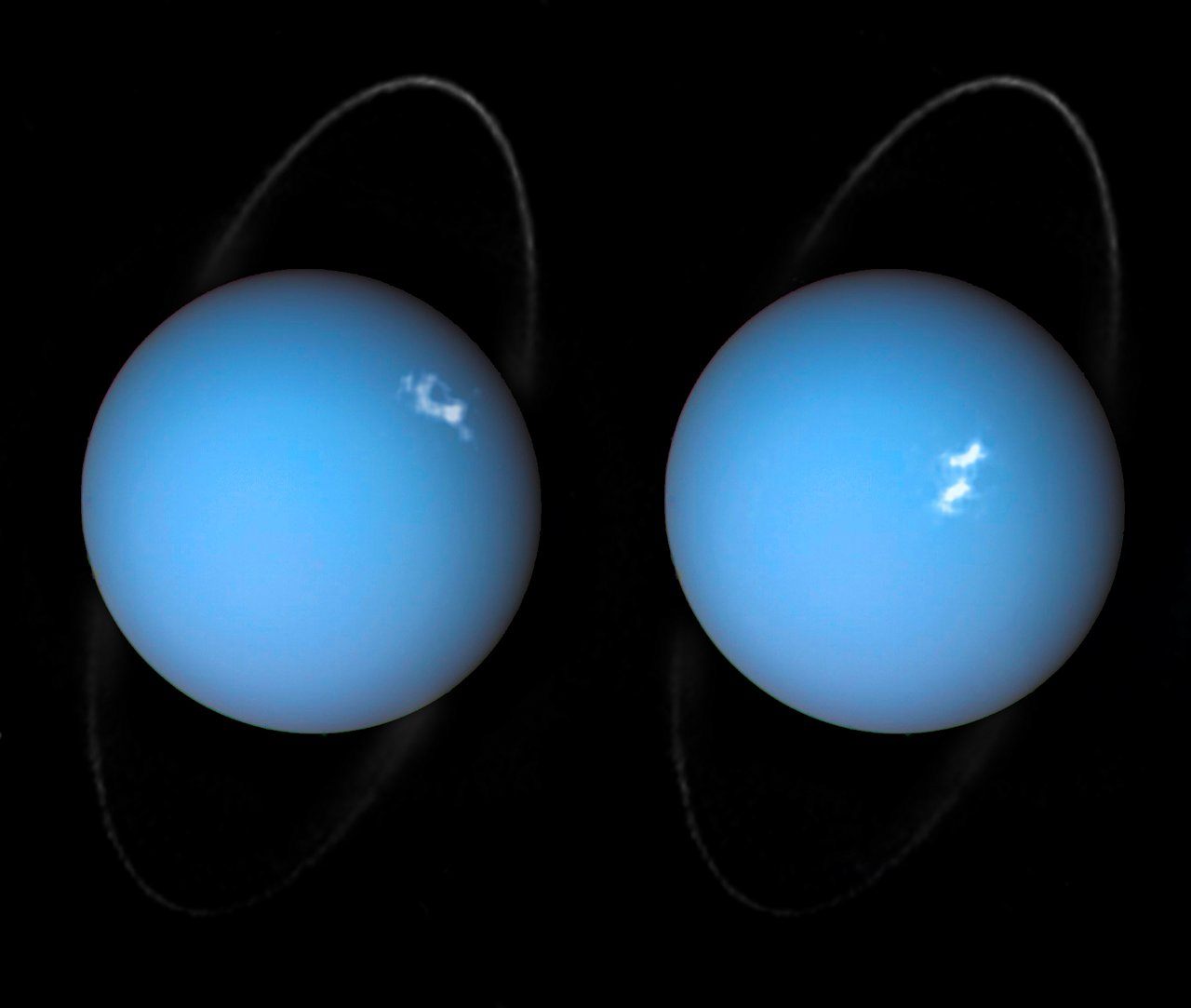Uranus’s Strange Magnetic Field Cartwheels Around All Willy-Nilly
Scientists call it a “geometric nightmare.”

Every planet in our solar system has quirks, but Uranus seems to have more than its fair share. For one thing, it rotates on its side because its axis is 98 degrees from vertical. It basically rolls drunkenly around the sun, and this unusual configuration means that its poles go through 42-year periods of light and darkness. The planet’s magnetic field is another oddity.
Compasses work on Earth because our magnetic field more or less lines up with our axis of rotation—geomagnetic north happens to be fairly close to the physical north pole (most of the time it’s only off by about 10 degrees). But trying to navigate by compass on Uranus would be a lost cause, because the magnetic field there is offset from its axis of rotation by about 60 degrees. As a result, its magnetic field “tumbles very fast, like a child cartwheeling down a hill head over heels,” said Carol Paty, coauthor of a new study, in a press release. “Uranus is a geometric nightmare.”
Most of the time Earth’s magnetic field is “closed,” meaning it deflects the solar wind of charged particles that flows through the solar system. Uranus, again, is perfectly different—it’s magnetic field flips open and closed like a giant cosmic strobe light. Paty, along with Xin Cao, a Ph.D. candidate at Georgia Institute of Technology, used data from Voyager 2 (the only satellite to visit Uranus, back in 1986) to simulate the icy planet’s magnetic field. Thanks to its strange rotational behavior, the field “goes from open to closed to open on a daily basis,” said Paty—regularly allowing the solar wind to sweep in to the surface, causing auroras far away from the poles.
We’ve spotted similar ice giants outside our solar system, so understanding how Uranus’s magnetic field works could help us understand these other planets. It may turn out that Uranus isn’t that weird after all.

















Follow us on Twitter to get the latest on the world's hidden wonders.
Like us on Facebook to get the latest on the world's hidden wonders.
Follow us on Twitter Like us on Facebook